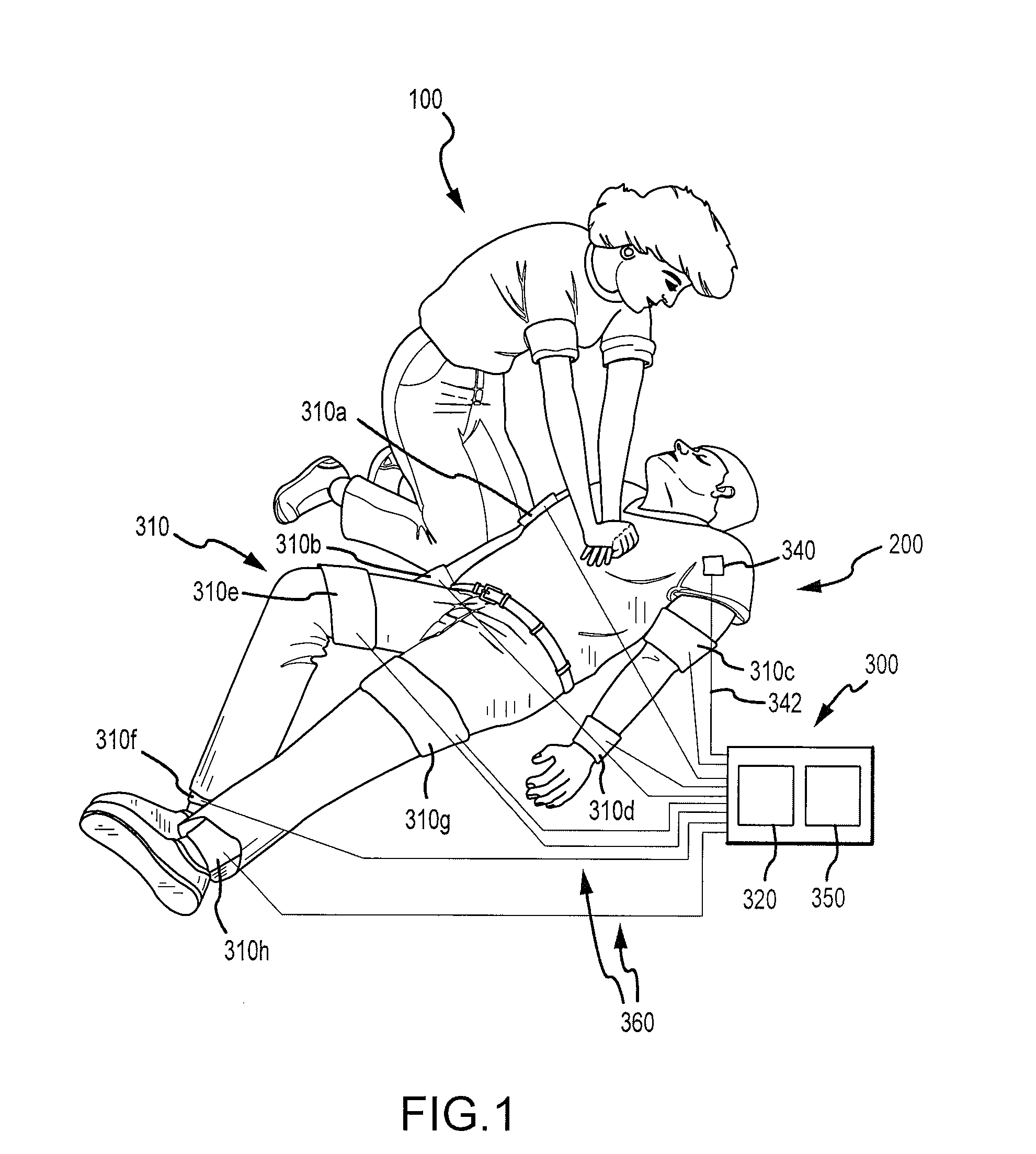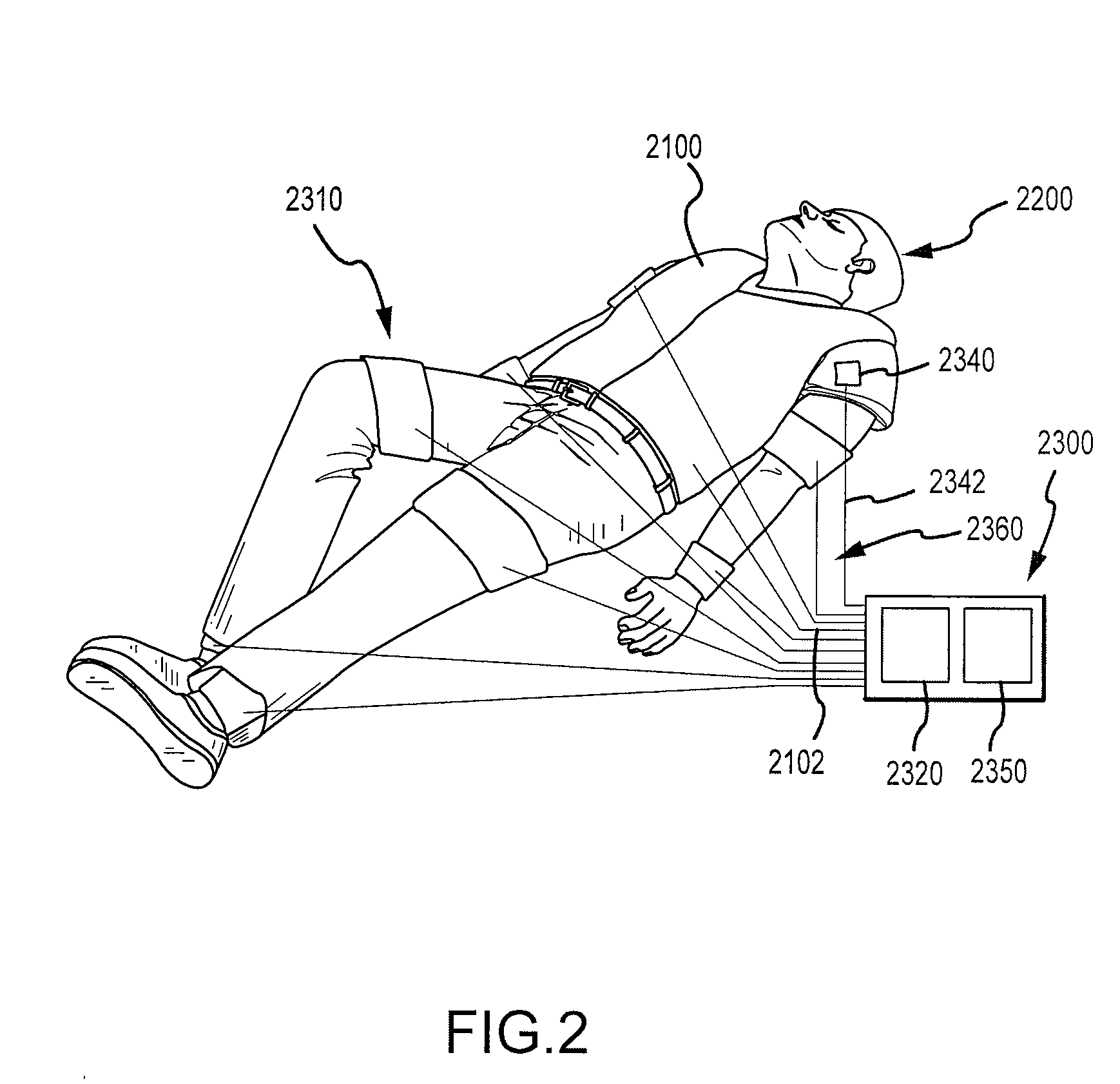Lower extremity compression devices, systems and methods to enhance circulation
a compression device and lower extremity technology, applied in the field of circulatory enhancement, can solve the problems of increasing intrathoracic pressure, poor blood flow to the heart and brain with traditional closed-heart cpr, and most people dying after cardiac arrest, so as to improve blood circulation, improve the effect of vital organ perfusion, and improve blood circulation
- Summary
- Abstract
- Description
- Claims
- Application Information
AI Technical Summary
Benefits of technology
Problems solved by technology
Method used
Image
Examples
Embodiment Construction
[0024]This invention describes methods and devices for increasing circulation in low blood flow states, including CPR, by promoting blood flow from the lower extremities into the heart after each chest compression. The methods and devices include a way to compress the lower extremities and optionally the buttocks in a manner that is timed with the decompression or chest wall recoil phase of CPR. During each subsequent compression, the blood is pushed out of the heart into the arterial circulation. In this manner, circulation is enhanced during CPR as more blood is transferred from the lower extremities to the heart during the chest wall recoil phase to better preload the heart for the subsequent compression. The lower extremities can be compressed on a one to one ratio with chest compressions, or at different ratios. For example, the lower extremities could be compressed prior to each chest compression, prior two every other chest compression, prior to every third chest compression ...
PUM
 Login to View More
Login to View More Abstract
Description
Claims
Application Information
 Login to View More
Login to View More - R&D
- Intellectual Property
- Life Sciences
- Materials
- Tech Scout
- Unparalleled Data Quality
- Higher Quality Content
- 60% Fewer Hallucinations
Browse by: Latest US Patents, China's latest patents, Technical Efficacy Thesaurus, Application Domain, Technology Topic, Popular Technical Reports.
© 2025 PatSnap. All rights reserved.Legal|Privacy policy|Modern Slavery Act Transparency Statement|Sitemap|About US| Contact US: help@patsnap.com



